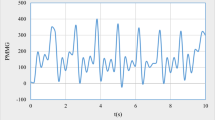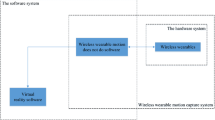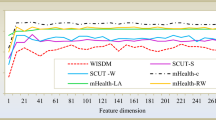Abstract
In the sports field auxiliary recognition system, the light motion capture device monitors the activity on the sports field in real time by sensing the body position and movement track of the exercisers. However, the current light motion capture device has some problems, such as not high precision, large delay, and so on, which need to be further improved. The aim of this research is to develop a light motion capture device based on Android intelligent platform, and apply it to the sports field auxiliary recognition system. It is hoped that the device can realize accurate recognition and real-time position tracking of sports players, and improve the performance and reliability of the auxiliary recognition system of sports field. In this paper, an optical motion capture device is designed and developed based on the Android intelligent platform. The device uses the camera to sense the movement of the mover, and extracts the key point information of the mover through image processing and algorithm analysis, so as to realize the accurate recognition and tracking of its position and movement trajectory. The experimental results show that the light motion capture device developed in this study has achieved good results in the field identification system. The device has high accuracy and low delay, and can accurately identify and track the body position and movement trajectory of the movement.





Similar content being viewed by others
Data availability
The data will be available upon request.
References
Aarabi, A., Fazel-Rezai, R., Aghakhani, Y.: EEG seizure prediction measures and challenges. In: Annual International Conference of the IEEE on Engineering in Medicine and Biology Society, 2009, pp. 1864–1867. EMBC (2009)
Aarabi, A., He, B.: A rule-based seizure prediction method for focal neocortical epilepsy. Clin. Neurophysiol. 123, 1111–1122 (2012)
Abd El-Samie, F.E.: Information Security for Automatic Speaker Identification, 1st edn. Springer, New York (2011)
Albregtsen, F.: Statistical Texture Measures Computed from Gray Level Matrices. Image Processing Laboratory, Department of Informatics, University of Oslo, Oslo (2008)
Alotaiby, T.N., Alshebeili, S.A., Alotaibi, F.M., Alrshoud, S.R.: Epileptic seizure prediction using CSP and IDA for scalp EEG signals. Comput. Intell. Neurosci. (2017). https://doi.org/10.1155/2017/1240323
Angurajsiva, J., Vasanthi, S.: Abnormality classification of diabetic macular EDEMA in retinal images. Int. J. Innov. Res. Sci. Eng. Technol. 3(1), 517–522 (2014)
Archana, G., Avinaya, V., Keerthi, C., Shivaram, G., Vasanthi, S.: Abnormality detection and its severity classification in retinal images. Int. J. Res. Eng. Adv. Technol. (2013). https://doi.org/10.53730/ijhs.v6nS9.13666
Belhadj, S., Attia, A., Adnane, B.A., Ahmed-Foitih, Z., Ahmed, A.T.: A novel epileptic seizure detection using fast potential-based hierarchical agglomerative clustering based on EMD. Int. J. Comput. Sci. Netw. Secur. 16(5), 7–15 (2016)
Chandrashekar, M.P.: An approach for the detection of vascular abnormalities in diabeticretinopathy. Int. J. Data Min. Techniq. Appl. 2, 246–250 (2013)
Chiang, H.-Y., Chang, N.-F., Chen, T.-C., Chen, H.-H., Chen, L.-G.: Seizure prediction based on classification of EEG synchronization patterns with on-line retraining and post-processing scheme. In: Annual International Conference of the IEEE on Engineering in Medicine and Biology Society, pp. 7564–7569. EMBC (2011)
Chu, H., Chung, C.K., Jeong, W., Cho, K.H.: Predicting epileptic seizures from scalp EEG based on attractor state analysis. Comput. Methods Programs Biomed. 143, 75–87 (2017)
Consul, S., Morshed, B.I., Kozma, R.: Hardware efficient seizure prediction algorithm. In: Proceedings of the International Society for Optics and Photonics on Nanosensors, Biosensors, and Info-tech Sensors and Systems, vol. 8691, pp. 86911J–86916J (2013).
Elgohary, S., Eldawlatly, S., Khalil, M.I.: Epileptic seizure prediction using zero-crossings analysis of EEG wavelet detail coefficients. In: IEEE Conference on Computational Intelligence in Bioinformatics and Computational Biology (CIBCB), pp. 1–6 (2016)
Gabor, A., Leach, R., Dowla, F.: Automated seizure detection using a self-organizing neural network. Electroencephalogr. Clin. Neurophysiol. 99(3), 257–266 (1996)
Gadhoumi, K., Lina, J.M., Gotman, J.: Seizure prediction in patients with mesial temporal lobe epilepsy using EEG measures of state similarity. Clin. Neurophysiol. 124, 1745–1754 (2013)
Gebejes, A., Huertas, R.: Texture characterization based on grey-level co-occurrence matrix. In: International Conference on Information and Communication Technologies (ICTIC), March 2013 (2013)
Gotman, J.: Automatic recognition of epileptic seizures in the EEG. Electroencephalogr. Clin. Neurophysiol. 54(5), 530–540 (1982)
Hassan, H.H., Goussev, S.: Texture analysis of high resolution aeromagnetic data to identify geological features in the Horn River Basin NE British Columbia. Recovery—2011 CSPG CSEG CWLS Convention (2011)
Hung, S.H., Chao, C.F., Wang, S.K., Lin, B.S., Lin, C.T.: VLSI implementation for epileptic seizure prediction system based on wavelet and chaos theory. In: Proceedings of the IEEE TENCON, 2010 (2010)
Iasemidis, L.D., Shiau, D.-S., Chaovalitwongse, W., Sackellares, J.C., Pardalos, P.M., Principe, J.C., Carney, P.R., Prasad, A., Veeramani, B., Tsakalis, K.: Adaptive epileptic seizure prediction system. IEEE Trans. Biomed. Eng. 50(5), 616–627 (2003)
Kaiser, J.F.: Digital filters. In: Kuo, F.F., Kaiser, J.F. (eds.) System Analysis by Digital Computer, pp. 218–285. Wiley, New York (1966)
Funding
The authors have not disclosed any funding.
Author information
Authors and Affiliations
Contributions
JX has contributed to the paper’s analysis, discussion, writing, and revision.
Corresponding author
Ethics declarations
Conflict of interest
The authors declare that they have no competing interests.
Ethical approval
Not applicable.
Additional information
Publisher's Note
Springer Nature remains neutral with regard to jurisdictional claims in published maps and institutional affiliations.
Rights and permissions
Springer Nature or its licensor (e.g. a society or other partner) holds exclusive rights to this article under a publishing agreement with the author(s) or other rightsholder(s); author self-archiving of the accepted manuscript version of this article is solely governed by the terms of such publishing agreement and applicable law.
About this article
Cite this article
Xu, J. Application of optical motion capture device based on android intelligent platform in sports field auxiliary recognition system. Opt Quant Electron 56, 296 (2024). https://doi.org/10.1007/s11082-023-05878-3
Received:
Accepted:
Published:
DOI: https://doi.org/10.1007/s11082-023-05878-3




